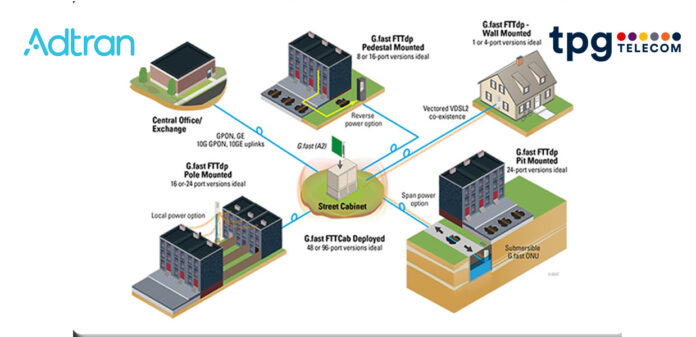HUNTSVILLE – Over the past 15 years, billions of dollars have been invested by the communications industry to deploy broadband to underserved rural communities and small towns.
Billions more have been spent in the form of government subsidies, grants, nonprofits, commercial awards, private investment and community matched donations.
Despite the billions in financial support, approximately 19 million Americans — 6% of the population — still lack access to fixed broadband service at threshold speeds, according to a Federal Communications Commission report. And in rural areas, nearly one-fourth of the population (14.5 million people), lack access to any internet service.
In the hard-fought and relentless pursuit of connecting the entire world with reliable high-speed internet, one thing became obvious.
There is not a one-size-fits-all-solution to connecting every home in the United States, much less all over the world.
That hasn’t stopped Huntsville-based Adtran from offering a slate of options for internet service providers globally. The products help the providers offer cost-effective and shorter time to market solutions when fiber alone is cost prohibitive.
“Fiber-to-the-Home technology service providers like XGS-PON because it can make a dumb piece of glass – fiber optics – do amazing things,” said Kurt Raaflaub, head of Strategic Solutions Marketing at Adtran. “Everybody wants fiber. They love it. They are willing to tear up streets and dig up yards to put it in until the jackhammers start.
“You want gigabit fiber-to-the-home when you can, but getting that last little bit of fiber from the curb into the home can get really expensive.”
Raaflaub said it can cost anywhere from $200 to $1,000 to trench the fiber from the curb to inside a home in the United States. Those with long driveways and large yards can be looking at $10,000 or more.
“And in places like Australia where things are spread out, a home can sit a mile or more off a main road. Getting high-speed fiber from the curb to the house can easily cost $100,000,” Raaflaub said. “These circumstances call for alternatives.”
In most neighborhoods, urban and rural, homes have long been equipped with 1990s-style coaxial cable and shielded twisted copper wiring in a telephone line.
Adtran has stepped up to provide an arsenal of fiber extension technologies that virtually extend fiber without it having to be run into the home, although it does have to be nearby.
TPG Telecom Group, the second largest telecommunications company in Australia, had a large residential market that was connected by very-high-data-rate technology, faster dial-up. They wanted to offer gigabit services to subscribers and everyone else in its DSL services footprint.
TPG used Adtran’s second-generation gigabit Gfast fiber extension portfolio to upgrade its services to gigabit speeds. Gfast uses in-building copper or coax wiring to access hard-to-reach urban and rural locations with gigabit services.
With that, TPG can launch competitive broadband service speeds 10 times faster than similar services offered by competitors.
In the process, Adtran is enabling TPG to rapidly roll out gigabit broadband services to more than 230,000 premises and 2,000 buildings across Eastern Australia.
“In today’s global digital economy, having access to Gigabit services is a big competitive advantage for any carrier that wants to offer the best connectivity solutions to residential and business customers,” said Jonathan Rutherford, group executive of Wholesale, Enterprise and Government at TPG Telecom. “The launch of Gfast has helped us offer some of the fastest broadband speeds available in Australia today and will be a game-changer for TPG’s wholesale business and customers.”
In the U.S., Gfast is an option for ISPs that want to provide gigabit service to underserved customers. It is just one of several different fiber extension technologies Adtran has to offer when it is too expensive to reach from the curb to the home.
“With Gfast, you do not need anyone to come into your home,” said Raaflaub. “We mail the customer a modem and they plug it into the phone jack. Yes, Gfast is basically fiber over copper phone line, and we were able to deliver gigabit speeds.
“The service is just as good, just as fast, just as reliable as gig.”
There are other fiber extensions as well.
Very High Bitrate Digital Subscriber Line technology known as VDSL technology is the new generation of broadband internet. It uses copper telephone lines but with faster connection speeds, depending on the length of the line from the home to the network equipment.
Microwave over fiber and Millimeter wave allows users to put a modem on the side of the home with an antenna inside. The modem will pick up fiber from the nearest FTTC point is, on a corner lamppost for example. It can talk to hundreds of homes at once.
“While it is promising technology, both Microwave and mmWave are way too expensive right now,” Raaflaub said. “Even so, Adtran provides service providers with multiple options for delivering a gig service to their subscribers. It is all about closing the digital divide and in a cost effective and timely fashion.”
Chief technology officer Anthony Camilleri said Adtran’s solutions enable service providers to increase competitiveness, offer premium broadband services and connect communities.
“For TPG, our Gfast portfolio provides the capability to leverage its existing network to deliver ultra-broadband and Gigabit broadband speeds,” said Camilleri.
But ultimately, it’s about maximizing a dumb piece of glass to make it smart enough to be cost efficient and fast to market.
Don’t miss out! Subscribe to our email newsletter to have all our smart stories delivered to your inbox.



